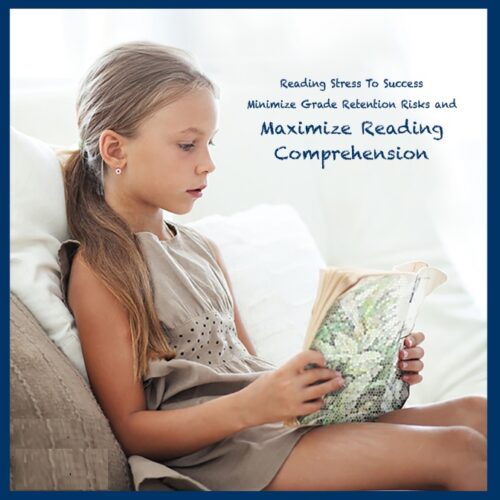
3D Learner is a provider for the Florida New Worlds Scholarship Accounts Program. 3D Learner can help your child improve reading and/or math. Effective July 1, 2024, New Worlds Scholarship Accounts Program made two significant changes
- Effective July 1, 2024, the New Worlds Scholarship Accounts Program expanded eligibility to include VPK students as well as public school students enrolled in kindergarten through grade 5 who
- have a substantial deficiency in either reading or mathematics;
- exhibit characteristics of dyslexia or dyscalculia;
- scored below a Level 3 on the statewide, standardized English Language Arts (ELA) or Mathematics assessment in the prior school year; or
- for VPK students enrolled in public school or private school programs, exhibit a substantial deficiency in early literacy skills based on the most recent progress monitoring results.
- For the 2024-2025 school year, the amount of the New Worlds Scholarship Accounts Program is $1200 per eligible student.
3D Learner addresses reading fluency, reading comprehension, math and so much more. We can tailor a program for the scholarship amount or use the funds towards a more comprehensive program. We assess for dyslexia, we offer dyslexia training, and we provide help to significantly improve reading comprehension and math skills.
You can click here to apply for the New Worlds Scholarship Account
To discuss your specific situation, answer your questions and discuss how we can leverage the New Worlds Scholarship Accounts Program to help your child succeed, give us a call at 561-361-7495.
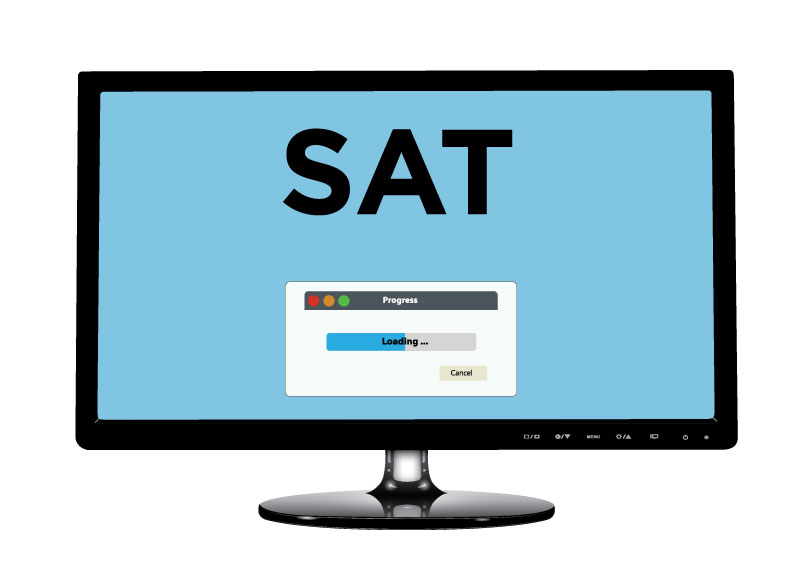
Advice on How to Improve SAT scores often focus on:
- Getting and using accommodations, especially extra time and read aloud option
- Learn how to use the calculator
- Practicing SAT tests, especially under timed conditions
- Get the right SAT Tutor
We believe it is incredibly important to focus on where your child’s is at and what their goals are:
Let’s take three cases:
- A student who had 1000 on their SATs and a 2.8 GPA going into his senior year. He wanted to qualify for the Gold Medallion Bright Futures Scholarship – a Florida scholarship that could be worth $20,000 if he went to either a public or private school in Florida. That means he has to improve his GPA his senior year to a 3.6 and to score a 1210 on the SATs.
Note, this student was a visual neurodivergent learner — who needed to both understand the benefits of working hard and a more visual approach. He was considered unmotivated and was not operating anywhere near his potential.
On the present Digital SAT, that would mean he had to go from 61 questions right out of 98 questions to 76 questions. We discussed that he could earn the scholarship or work 2000 hours at $10 an hour. This student put a $20,000 check above his desk made out to him and worked hard. The results:
-
-
- A 3.7 GPA his senior year
- 1230 on his SATS
- Earning his $20,000 scholarship
- Another student had a 4.2 GPA that was high enough to earn the academic scholarship worth $30,000. He was at 1100 on the SATs. On the new Digital SAT, that would be equivalent to increasing the number of questions right from 67 to 82. He also got advice that the higher SAT score would allow him to get into the University of Florida. We helped him to improve his SAT scores to 1370.
- International College Counselors help students to target a stretch school and to have a clear vision of what is needed to get into their dream schools. The student wanted to get into the University of Michigan, where the lowest quartile got a 1350, the average SAT was a 1435 and the upper quartile averaged an SAT Score of 1530. The student set a goal to get an SAT score and achieved it with help and hard work.
At 3D Learner, we agree with all these recommendations and believe it helps to set goals and to improve foundational skills including:
- Attention, as many students lose focus during the test
- Reading speed. While the read aloud option on the SAT helps, we know that many students read slowly.
- Visual processing — many students skip words and lines when reading and make too many mistakes in math problems as they miss signs and small words
- Vocabulary.
- Inference skills
- Reading comprehension
- Understanding key math concepts used in the SAT
- Developing what we call a Hawk like skill, to identify the trick that is required to either understand the question or to solve it quickly
Improving reading fluency and reading comprehension can really help. One student could not get accommodations, because, while he read slowly, he did not have a qualifying condition. While his comprehension was at the 12th grade level, he read at only 125 words per minute. We were able to improve his reading speed from 125 to 300 words per minute, while improving his comprehension 2 grade levels.
The Right SAT Practice Works Best
Many students take multiple SAT tests, but do not make significant gains. The 3D Learner approach is to help the students in their practice to:
- Start with clear goals and plot their progress – the goals may come from advice from others on what is needed to get into the college of their choice.
- Better understand the math concepts and the formulas to use.
- How to draw out questions – so they can see the answer
- How to check their work
- How to understand questions – for punctuation, grammar and inference questions, this are often skills they have not mastered
- Adjust their approach if they are not making progress
- Be over prepared
Three Steps on How to Improve SAT Scores
1- Understand your child’s present leve of performance and how many more questions they need to get right to achieve their goal. The right college admissions counselor is best suited to know what is needed to get into specific colleges or universities.
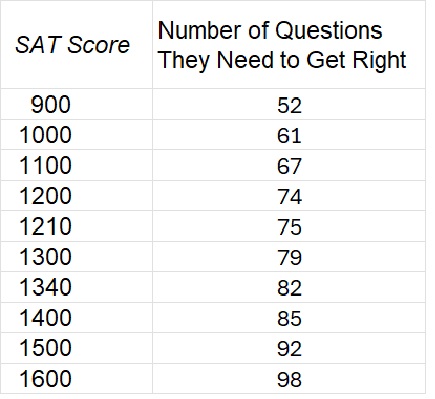 Website for calculating SAT Scores
Website for calculating SAT Scores
2- Get help from the right SAT Tutor who can help your child achieve their goals – which may include both improving foundational skills and SAT Scores — which can also improve your child’s GPA.
3- Put in the time on task and learn new skills
If you would like to discuss How to Improve SAT Scores for your child, you can reach us at 561-361-7495 or give us a call to have a “How to Improve SAT Scores” for your child

At 3D Learner, we address parents’ concern on how to improve SAT Scores. For years, we have worked with International College Counselors, a highly reputable and experienced company that has helped thousands of students to plan for and be admitted into the just right college or university.
On Thursday evening, September 12th, we will be part of a webinar hosted by Nicole Jobson, a longtime member of the International College Counselors team.
Nicole will:
- Provide college preparation, selection, and application strategies which address the unique needs of neurodivergent students.
- Offer insight on how to balance a competitive application process with compassion, while meeting the student’s specific needs.
- Ease the anxiety often faced by families during the college application process by equipping them with practical tools and resources specifically designed for neurodivergent applicants.
We will be addressing how to improve SAT scores, and how to improve reading comprehension and GPAs for:
- The bright right brain, neurodivergent learner who needs to improve their reading comprehension, attention and other issues to improve SAT scores. We define a right brain neurodivergent learner as one who learns best when they see and experience information.
- The motivated student who wants to know how to improve SAT scores to get into a better college and/or to earn a scholarship — like Florida’s Bright Futures Scholarship
- How increased SAT scores can help a student in Florida earn scholarships that may be worth $20,000 to $30,000
Help your child to get into a better college and to be far better prepared to succeed in college.
The Digital SAT was introduced in March 2024. The new Digital SAT was hard for all students. For right brain neurodivergent learners, the Digital SAT was even harder. While the new digital app worked well, there were several comments that were shared by a number of students we have spoken with:
- The math section of the Digital SAT was very hard, with a number of new and different types of questions.
- The reading section was different – with a number of new questions on punctuation, “dependent” and “independent“ clauses and many questions that required inference skills.
- Overall, the SAT scores were close to historical levels, since the test was curved to do that.
The bad news is that those who struggled with the new format did much worse.
A positive note is that once a student learns how to solve the problems, they can see significantly improved SAT scores. It’s about learning new skills, looking for the tricks and finding patterns!
We have been helping students improve SAT scores for many years. What we have found is that many students struggle and:
- Lose focus during the test
- Read slowly and have problems with vocabulary and reading comprehension
- Struggle with the SAT because the questions are tricky. It is not straight forward, so being able to understand multiple meaning words is vital
3D Learner has a unique approach, where we can help a student:
- Improve their attention. This helps them to score better and do better in school and athletics
- Increase their vocabulary, reading speed and reading comprehension
- Then work on improving reading and math SAT Scores
- Show the student even more effective ways to solve the problems
- Increase their test scores, often by a significant amount
Advice to All Parents
- If your child complained about the March 2024 or June Digital SAT test — listen and respect their frustration. As with any new test, change is hard.
- If you are using books from before 2024, get new books. The questions are quite different. We use two 2025 Princeton Review Books for the Digital SAT 2025. Here are the books and a link to Amazon for each one:
- Practice with the new questions can be very helpful. We recommend you consider:
- Working with a professional who has had experience with these tests
- Having your child practice more than normal
- Be prepared to have your child take the test more than once
- Set goals with your child. This is especially true for students who want to get into a top flight school or one who wants to earn a scholarship
For example, in Florida, a student needs a 1210 combined SAT to qualify for the Bright Futures Scholarship that might be worth $20,000 over 4 years, and a 1340 combined SAT score to earn a Bright Futures Scholarship that might be worth close to $30,000 over 4 years.
We had a rising senior who needed to get a 3.6 GPA and a 1210 on his SAT to qualify for the Bright Futures Scholarship. This was a challenge given his cumulative GPA was 2.8 and his initial SAT scores were 1010. With our help and the motivation provided by the scholarship, he got a 3.75 GPA and a 1220 on his SAT score. Motivation matters.
Have your child set goals, track their progress and reward their gains.
Advice to Parents to Improve SAT Scores and Get Into the Best College for Them
- Work with professionals whose expertise is helping kids like yours get into the best possible schools. International College Counselors helps both:
- Neurodivergent learners get into a school that meets their needs
- Neurotypical students get into top universities
- Do all of the above and consider working with someone who understands your child’s specific strengths and challenges and can help them succeed. These might include:
- We have a number of students who lose focus during the test, and this happens elsewhere. At 3D Learner, we use the Interactive Metronome ® to improve attention. It also:
- Improves reading fluency by one grade level
- Improves math fluency by two grade levels
- Improves sports and related skills
- Creates new neural pathways that appear to be permanent
- Improving vocabulary, reading speed and reading comprehension
- The wording is different, and it helps to have someone who can explain things in a hands-on visual approach, that will allow your child to understand the concept
- Reading speed is often a challenge for the right brain neurodivergent learner. We have been able to significantly increase a student’s reading speed, while also improving their reading comprehension
We had a student who read at 125 words per minute and could not complete the test. With training, he increased his reading speed to 300 words per minute, while improving his reading comprehension 2 grade levels. His reading SAT score increased by 140 points.
- Reading comprehension is an issue for two different groups:
- When reading comprehension is well below grade level, getting a good SAT score can be very difficult. When one improves reading comprehension by 2 or 3 grade levels, GPAs and SAT scores both improve
- When a student wants to get into a really competitive school, improving reading speed, reading comprehension and vocabulary combined with SAT Prep can result in a significant improvement in their SAT score
- Finding someone who can show them an even easier way to solve the problems and who share it in a way that your child will accept their advice
- Having someone who can explain the new grammar questions and how to address them
- Having the availability to schedule extra sessions to help your child adjust and master the necessary skills. All of this training is done remotely-
- Be flexible and consider having your child take the test more than once, with enough time in between to significantly improve their results
Due to the significant changes in the Digital SAT, we expect those students who get the right help and practice enough, to see even greater benefits than normally. For a right brain neurodivergent learner, the new Digital SAT presents both significant risks and opportunities.
If you would like to discuss your child’s unique situation and explore how to improve SAT scores, please
call us at 561-361-7495 in Florida or
at 919-371-5295 in North Carolina.
For personalized guidance on the college preparation, selection, and application process for your child, please contact Nicole Jobson, MS. Ed. at 954-414-9986 (office) or 954-288-4496 (cell).
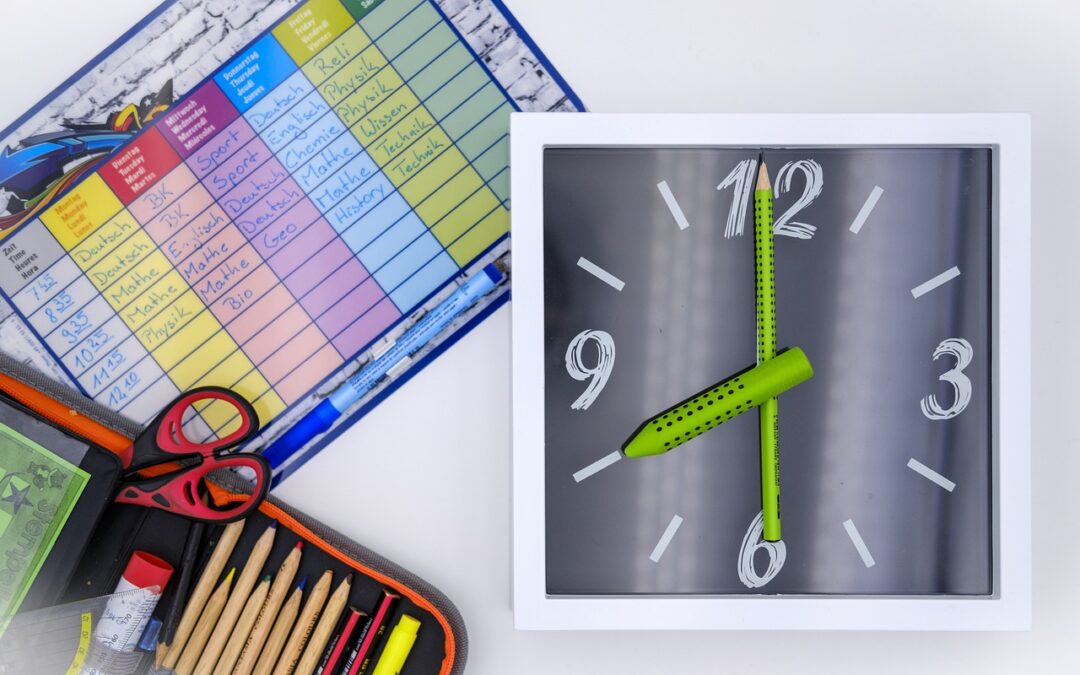
Strength based parents can increase their chances for success by combining a visual schedule, a clear picture of what you want and explaining why, in a few words.
As your child gets ready to go back to school or has already started: remember STRUCTURE, consistency and a clear picture of what you want really help.
If your child is starting back to school before Labor Day – that reminder that Summer is over, and we are transitioning into Fall – use these couple of weeks to practice so that by September you have developed a routine that is working.
If your child is not in school yet, start to put these measures in place so that there can be a smoother transition.
Three key points on “fewer words, more pictures”.
- The right brain, the kinesthetic learner and the visual spatial learner thinks in pictures and thrives on structure
- Too many words overwhelm them (floods them with pictures!)
- A simple picture with a brief explanation can make all the difference. Strength based parenting leverages your kid’s ability to understand things when they can see what you mean and understand the why.
If you are at a swimming pool, watch and listen as parents say, “Don’t run” and their kids sprint towards a friend. You will not be surprised. Try, “Walk like an elephant!”

Consider the 5 things a child may need to bring to school, their:
- Backpack
- Notebook
- Homework
- Lunch – WATER BOTTLE
- Keys (other personal effects)
Take a photo of those things and place that photo on the door of their bedroom (or wherever they might gather those items ) and another by the door as they exit.
Too often we hear of parents sharing/reminding (mostly shouting) what is needed, and the kids often forget one or more items. Having that visual, NON-VERBAL cue can save your morning.
USE A VISUAL SCHEDULE
For all of you parents who tell me “We used to do this when our kids were small” or I’m really not that kind of person. PLEASE PRINT out a copy of our GIFT TO YOU, our Visual Schedule,
Place it on your fridge or a prominent place where all family members can see it. Do not just rely on your phone or Google Calendar— Your kids need to see the whole week! Certainly, short verbal reminders are great– but having a visual that is constantly there will help tremendously. This should be viewed as a “working document” for all to add to and be responsible for. This should not be viewed as another chore.
It is actually very calming or grounding to lay out what the week looks like. It is a good excuse to have a weekly family meeting as well. Sunday Night Stress is a real thing! To alleviate this, plan something positive or fun to do together. Just be sure to make planning out the week a part of that. Listen carefully to how your kids give input and make sure they know they are being heard. Telling kids “not to worry” creates more anxiety. If you have followed us for a while you know that we are big on coaching parents to choose words wisely and use language that creates a positive action. If you are new to 3D Learner, Welcome. We are here to help you be a great coach and advocate for your Right Brain Visual Spatial Learner.
REMEMBER- this is about how your child thinks and learns: If you want teachers to help your child at school- then YOU need to start at home and use strategies that set the tone. Consistency at home and school are what will work.
This transition from summer to school is difficult for everyone- and the outdoor heat does not help. Make sure that water is an integral part of their schedule (I put it on the calendar – just as a reminder!)
All the best to all of our families as they start this NEW SCHOOL YEAR.
We are here to help you in any way we can. Please contact us with questions.
Note, strength-based parents who use both a visual schedule and create a clear picture for what they want, often see positive changes relatively quickly.
Contact info:
Telephone: 561-361-7495
North Carolina 919-371-5295
Email: parents@3dlearner.com
No cost consultation www.3dlearner.com/booknow
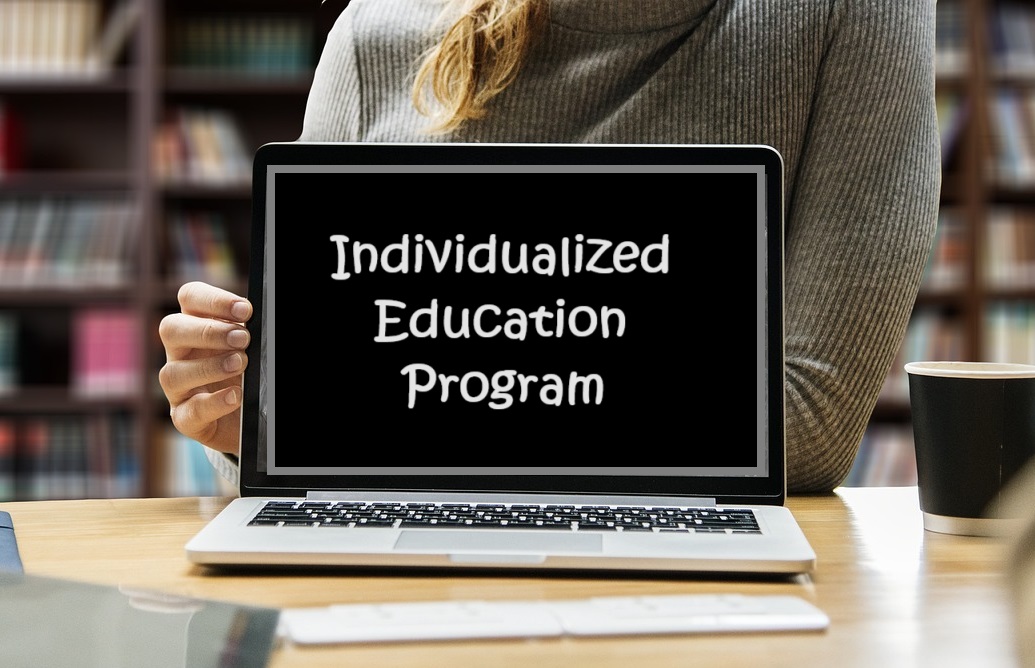
We define the Right IEP as one that leads to the student making significant gains in all key areas.
Getting The Right IEP is not as hard as people think it is. Five things to know
- A parent has the right to request an interim IEP at any time. There are no time limits as to how soon the meeting will occur, but schools often respond in a reasonable time frame
- Most IEPs are not designed to help the student to be all they can be. Too often the reading goals are focused on reading fluency – that is how efficiently and effectively the student reads. Even in the early grades, you want the Right IEP that focuses on reading fluency, reading comprehension and other areas of need.
- Interim IEP meetings are almost always initiated by the parents and the request should be in writing.
- The school may say that it is not needed, but persist
- The Right IEP will often result in much BOLDER GOALS, and a greater focus on both reading fluency and reading comprehension
Too often when we read an IEP we see one of two things:
- The present level of reading is defined by a student’s reading fluency.
- A reading comprehension goal like “The student will answer main idea questions correctly 4 out of 5 times at their independent reading level”. This could be done very easily, it is unlikely to result in significant growth and it may wind up with the reading comprehension gap widening.
While some people will say that reading fluency and reading comprehension levels are often the same, we have seen:
- A 3rd grader who was reading on grade level according to the school, but his reading comprehension was two years below grade level.
- A 5th grader whose reading fluency was at the 5th grade level and when we tested his reading comprehension it was at the 1st grade level
- A 10th grader whose reading fluency was at the 9th grade level and his comprehension was at the 2nd grade level
In the earlier grades, it is likely that both reading fluency and reading comprehension are both issues. As shown below, studies have shown that:
- The student with a word identification problem in 1st grade has almost a 90 percent chance of being a poor reader in 4th grade.
- A 3rd grader with a reading disability (dyslexia) has a 70 percent chance of having a reading disability (dyslexia) in 12th grade

Note, for special education students in secondary school, a longitudinal study showed that 45 percent of the students were 3 to 4.9 years below grade level and an additional 21 percent were 5 or more years below grade level. This was before COVID.
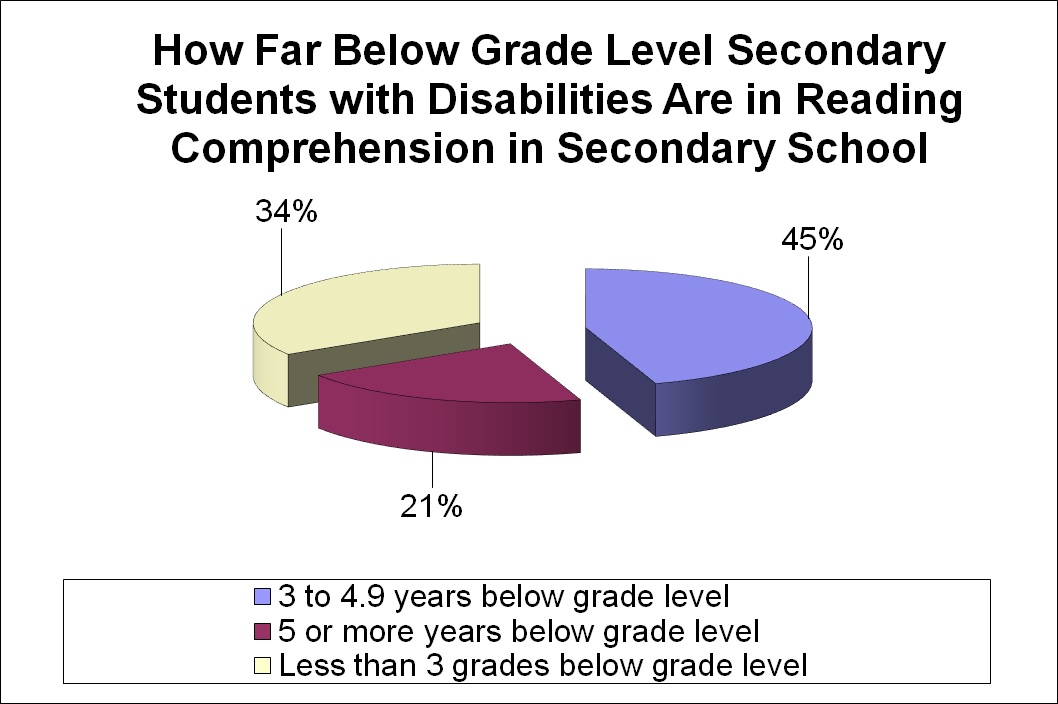
The reading comprehension gap often widens, even for bright and gifted students, especially for those with a learning disability, a reading disability or dyslexia
For reading comprehension goals, we want to see the student close the gap with their peers, where possible. So, if a 5th grader is reading at the 3-grade level, and they had an average or above average IQ, we would want the goal to be to improve their comprehension by at least 1.5 grade levels. It may also require more than one goal.
The Right IEP May Include Other Items
Other issues parents have shared is their child has difficulty taking notes in class and homework often takes forever, because of poor note taking, not getting the assignment written correctly and/or it just takes them forever — especially with math word problems.
The programs your child receives, and the intensity of the effort are based on the goals — so it is important to have a specific goal for what your child needs. For example:
- If note taking is an issue, the goal may be for the student to be given a copy of the notes each day, preferably before the lesson is given — this allows them to add comments to the note
- If homework time is an issue — we often recommend lessening the load for math word problems — for example, if the teacher assigns Problems 1 to 20, the goal might be that the student will complete all the odd numbered questions.
- If your child has difficulty writing the assignment correctly, and even if they do the assignment, they frequently will not hand in the assignment. This might require more than one goal including:
- The student will either be given a copy of the assignments or the teacher will confirm that it is written in their agenda correctly
- The parents will insure:
- The assignments are done
- They are put in a specific place where the student can find them
- The parents will countersign the agenda confirming these actions have been done
- The student will hand in the assignments, with prompting from the teacher where needed
If appropriate, we suggest you review your child’s IEP and ask yourself:
- Are the goals as bold as they should be
- Do the goals include reading fluency and reading comprehension, where needed
- Are there other specific items where performance is an issue and you need both a new goal and either services or accommodations
If a new IEP is needed and the next IEP meeting is not scheduled to occur within the next three months, we recommend requesting an interim IEP meeting ASAP and list:
- Your areas of concern
- Where you want a new present level of performance done before the meeting
- The specific areas you want to consider for different goals, programs intensity of intervention and accommodations
- Your willingness to do your fair share and more

The Right IEP may not fully close the gap, but it can lead to far greater gains and less stress.
Download a visual schedule for an Interim IEP

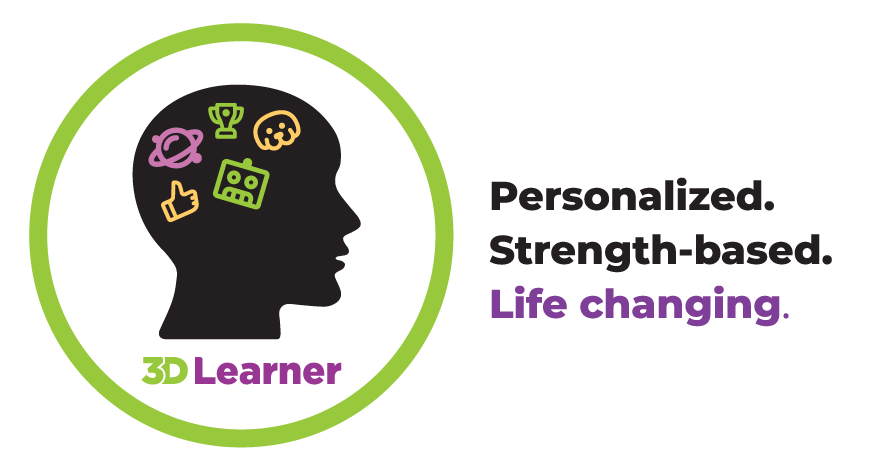
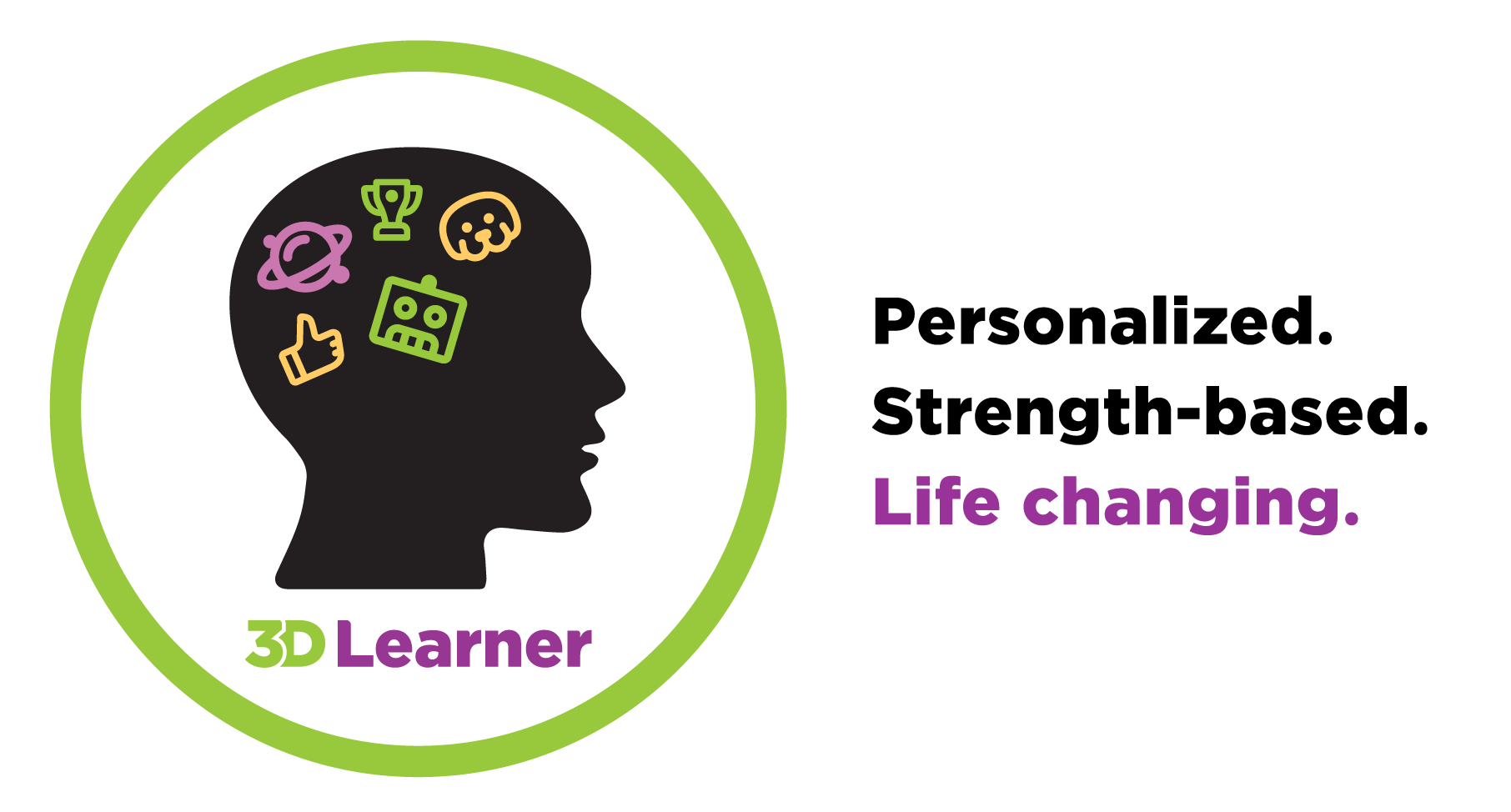








Recent Comments